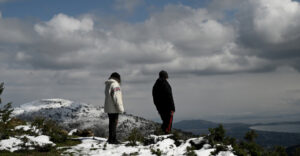Jason Czapla is walking across a former lake bed in the middle of southern California. The ground simmers at our feet as little mud volcanoes disgorge piles of hot, sulfurous muck. The Salton Sea glitters in the distance, beckoning as the morning temperature approaches 106 degrees Fahrenheit.
Everything about this place, around a hundred miles from the Mexican border, feels like it’s about to combust. But for Czapla, a former petroleum engineer, there are few places he’d rather be.
“It’s the perfect storm in terms of a renewable energy project,” says the chief engineer for Controlled Thermal Resources, wearing a white polo shirt and dark sports glasses that hide the excitement in his blue eyes. “This is the best resource in the world”.
Made by bees: Slovak artist uses honeybees to sculpt a wax bust of Nefertiti (photos)
Czapla is in charge of a 7,380-acre plot owned by Controlled Thermal Resources (CTR). It’s a barren scrap of desert that ends abruptly in the great saline sea east of San Diego. For a geothermal engineer, it’s paradise.
Two kilometers below the surface lies a mineral-rich cauldron of hot water where temperatures can exceed 390°C. As the Salton Sea recedes, opportunities to turn that into energy and profits are emerging. If California approves its permit, CTR will start operating its Hell’s Kitchen Lithium and Power project in 2023, one of the first new US geothermal power plants in almost a decade.
Read more: QZ
Ask me anything
Explore related questions





